You hear a hissing noise coming from your car. It doesn't stop, and it's loud enough to be heard over the engine. You can't figure out what it means, and you think that your car is about to explode. We have done research to find out if the hissing is a real problem and have answers to share.
A hissing noise is an indicator that there's a vacuum leak somewhere in your vehicle. The leak is caused by a loose fitting or cracks on a hose or gasket on a component that is causing air to escape. If you hear a hissing sound coming from the engine or car interior, it might be due to air escaping from one or more vacuum lines.
Keep reading to learn more about this problem. We'll discuss the common signs and symptoms of a vacuum leak and more.

What Is A Vacuum Leak in a Car?
A vacuum leak is a type of air leakage that occurs when the vacuum lines, hoses, and gaskets connecting the engine to the air intake manifold fail. This might be due to worn or damaged hoses or simply as a result of age and exposure to heat. 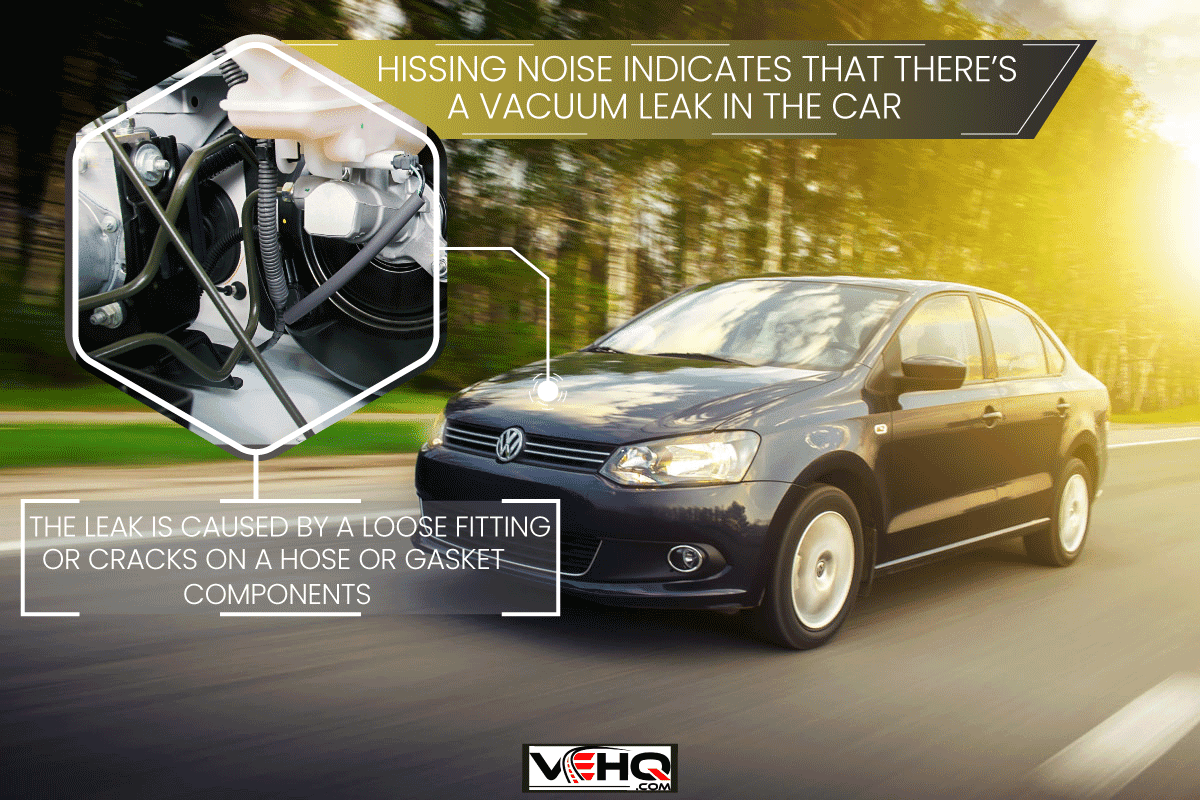
The most common example of a vacuum leak is a vehicle's brake booster, which is a diaphragm-based device that allows the driver to apply pressure to the brake pedal, thus causing the master cylinder to create pressure on the brake lines.
In addition, a vacuum leak can occur at various other locations in the car. Here are the most common locations where you will find vacuum leaks in your vehicle:
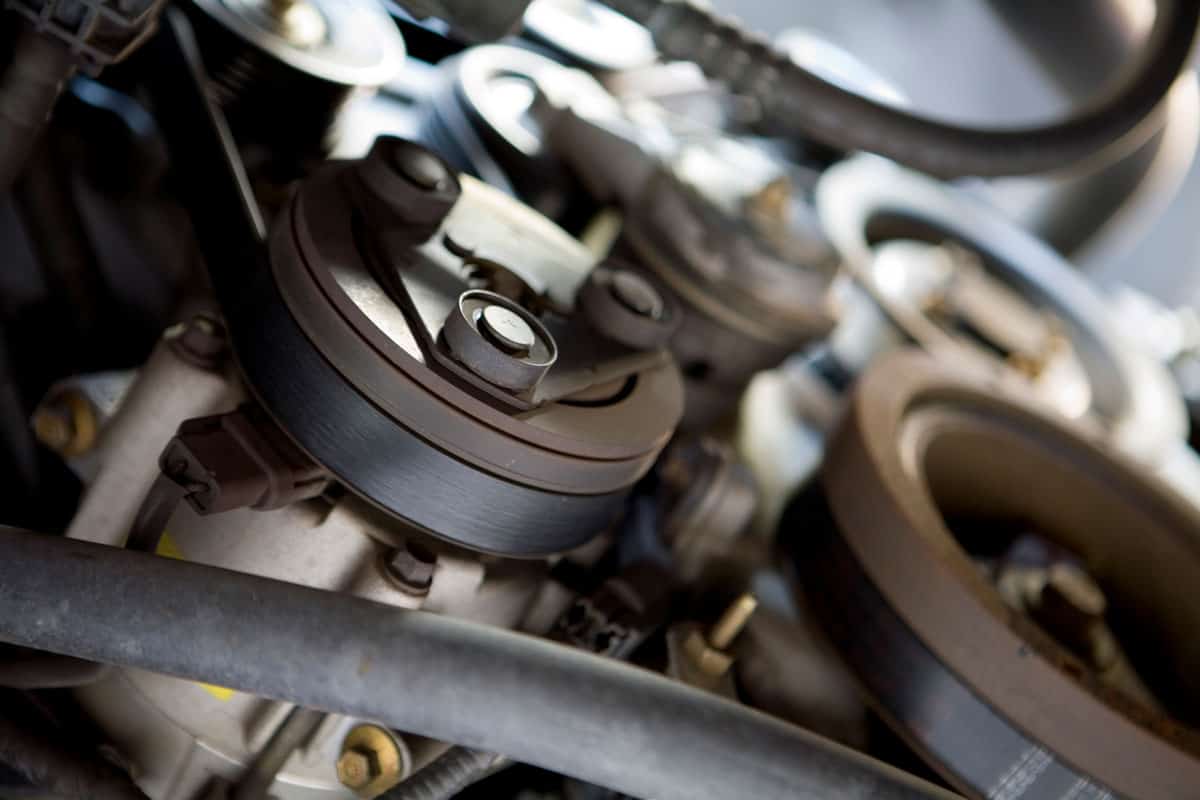
1. Engine air intake hose
An engine air intake hose connects to the engine and picks up air from outside. Its function is to pull air into the engine to provide oxygen to the engine cylinders. The air is then mixed with fuel and ignited to produce combustion within the cylinders.
In addition, the air intake hose is usually located at the front of the engine, under the hood. You can easily identify an engine air intake hose because it's the largest hose where the MAF (mass air flow) sensor sits on top of it.
If the air intake system hose is leaking air, it could lead to issues with the vehicle’s engine. A loose air intake hose, for instance, can send air to the engine, but not allow enough air to get to the engine.
The engine may work hard to get the required amount of oxygen, which could lead to rough idling and premature engine wear if not corrected.
Check out this air intake hose on Amazon
2. Vacuum lines
Vacuum lines, or vacuum hoses, help to keep the engine’s system in order by keeping the pressure levels within the engine at their correct levels.
When there is a leak, the engine has less power to pull and push. Because of this, it’s more difficult to keep the gas flowing and the air flowing.
Check out this universal car vacuum hose on Amazon
3. Brake booster
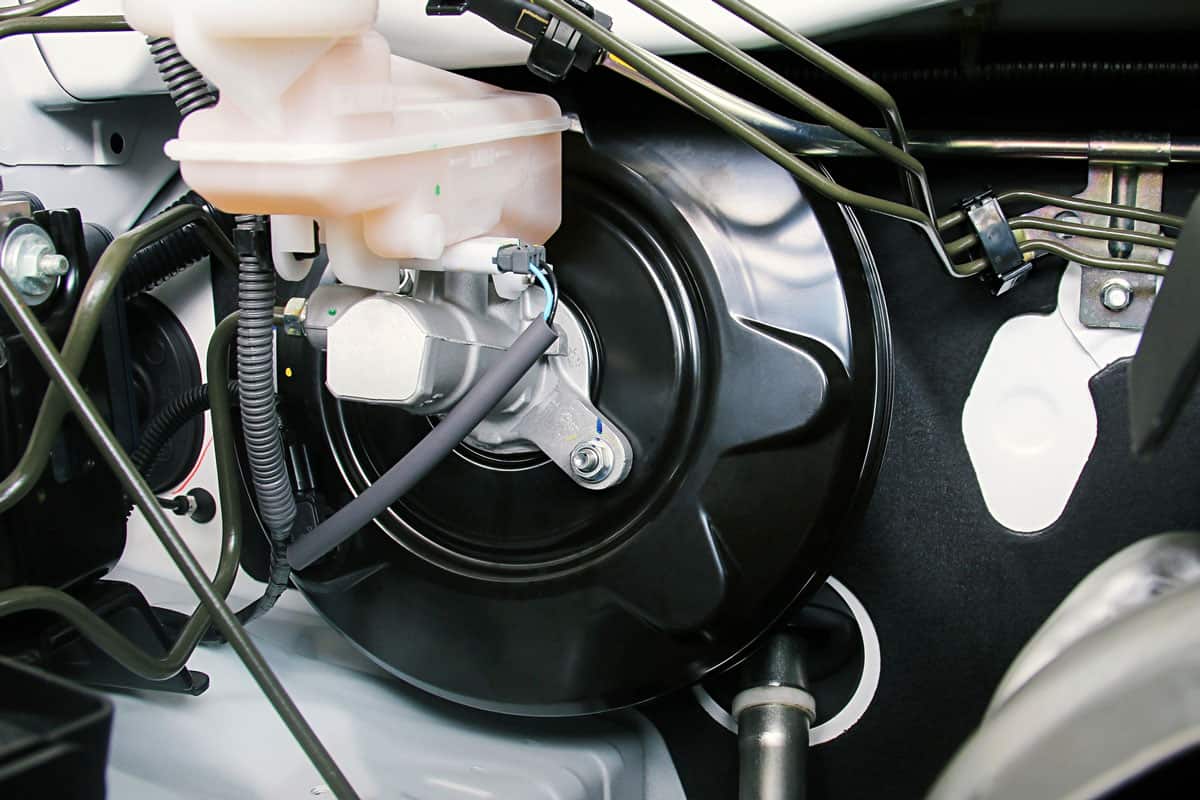
A brake booster is a vacuum-operated device that reduces the force required to apply the brakes. It consists of a diaphragm that is pushed down when the vehicle's brake pedal is depressed, and it creates a vacuum inside the booster.
Furthermore, this vacuum creates additional force on the master cylinder piston, which increases the force applied to the brake shoes or pads. This increased force is used to stop the vehicle.
If you observe that your car is running with a lean mixture of air/fuel and the engine RPM drops to a point where the engine stalls, there could be a vacuum leak from the brake booster.
Before any of these things happens, you will hear a hissing noise. This problem is commonly caused by a defective rubber gasket in the booster.
Watch the video below to learn how to deal with a leaking brake booster:
4. Intake manifold gasket
An intake manifold gasket is a thin aluminum plate coated with rubber with a series of holes through it. The holes are designed to fit the engine cylinders.
Further, the holes are spaced so that when the intake manifold is placed on top of the cylinder head, the holes align with the cylinders.
Most importantly, the intake manifold gasket is designed to provide a seal between the intake manifold and the cylinder head. An intake manifold gasket is required to prevent fuel and air from leaking out of the engine during normal operation.
A good intake manifold gasket is essential to ensure proper airflow. With the help of a properly fitted gasket, intake manifold-related problems like a loud engine idling or engine stalling are prevented.
If the gasket becomes damaged or loose, the air that is supposed to go to the cylinders leaks, causing a loss of performance and an increase in engine emissions.
Moreover, it is important to have a vacuum-sealed intake manifold because the air that is being fed into the engine gets compressed in it. This compressed air is then directed to the cylinder heads.
A leak in the intake manifold can lead to inefficient combustion of the air-fuel mixture and other issues.
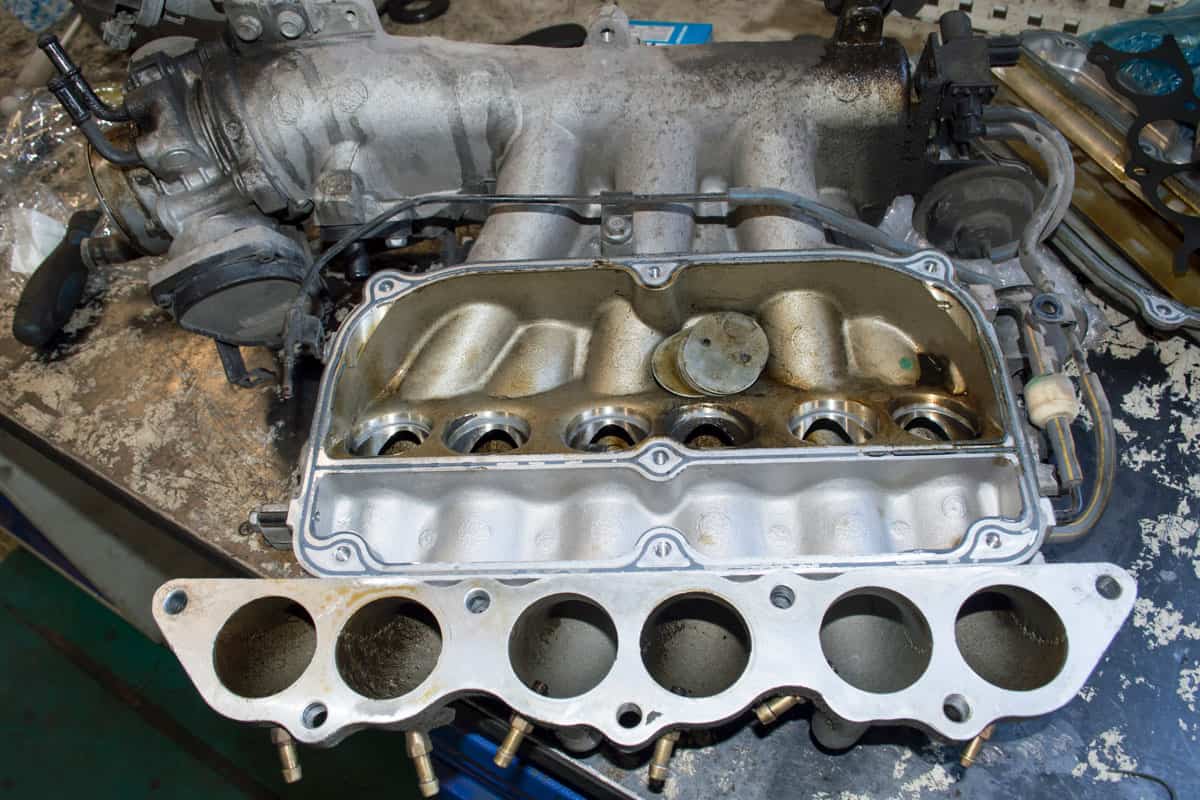
5. Throttle body gasket
A throttle body gasket is one of the most important components in your car's intake system. It is the part that prevents incoming air from bypassing the throttle body.
The throttle body gasket is located between the intake manifold and the throttle body on your car, and it is made out of either paper or aluminum.
In order for it to work properly, it needs to be tightly sealed against the intake manifold so that there is no leakage or any sort of air in between the two.
If you have ever noticed that your engine seems to be experiencing rough idling or your engine doesn’t seem to be working as efficiently as it should, then a worn-out throttle gasket could be the cause.
Check out this throttle body gasket on Amazon
6. PCV valve
Positive crankcase ventilation, or PCV, was invented to reduce the emissions of gases (blow-by) into the atmosphere and protect the engine from damage. It works by routing these gases back into the combustion system to be reused.
Over time, these blow-by gases become contaminated. These contaminants can form deposits inside the crankcase, restricting the flow of air into the engine. This can result in the engine running hotter and developing excessive smoke.
A properly functioning PCV valve prevents the release of harmful gases into the atmosphere. But in certain instances, the valve may fail and allow the emission of these dangerous substances. In this case, the valve must be replaced with a new one.
7. EGR valve
An EGR valve is used to reduce the amount of nitrogen oxide that is produced by the engine. The valve allows exhaust gas to be vented from the exhaust manifold back to the engine cylinders, where it is mixed with fresh air before being drawn into the engine.
This reduces the amount of oxygen in the cylinder and thus lowers the amount of oxygen available to form nitrogen oxide when the mixture is ignited. A broken EGR valve will mean increased emissions.
Watch the video below to learn how to locate a vacuum leak in your car:
Is A Vacuum Leak Serious?
When an engine is running, the air inside is mixed with fuel in order to produce combustion. The result of this is a gaseous mixture of air and fuel that is known as the air-fuel ratio.
The ideal air-fuel ratio is 14.7:1, which means that the air and fuel burn completely and without an excess of either.
However, when an engine runs continuously and with a very lean air-fuel ratio, the engine begins to break down due to the extreme heat produced from the burn of the fuel.
What Are The Symptoms Of A Vacuum Leak?
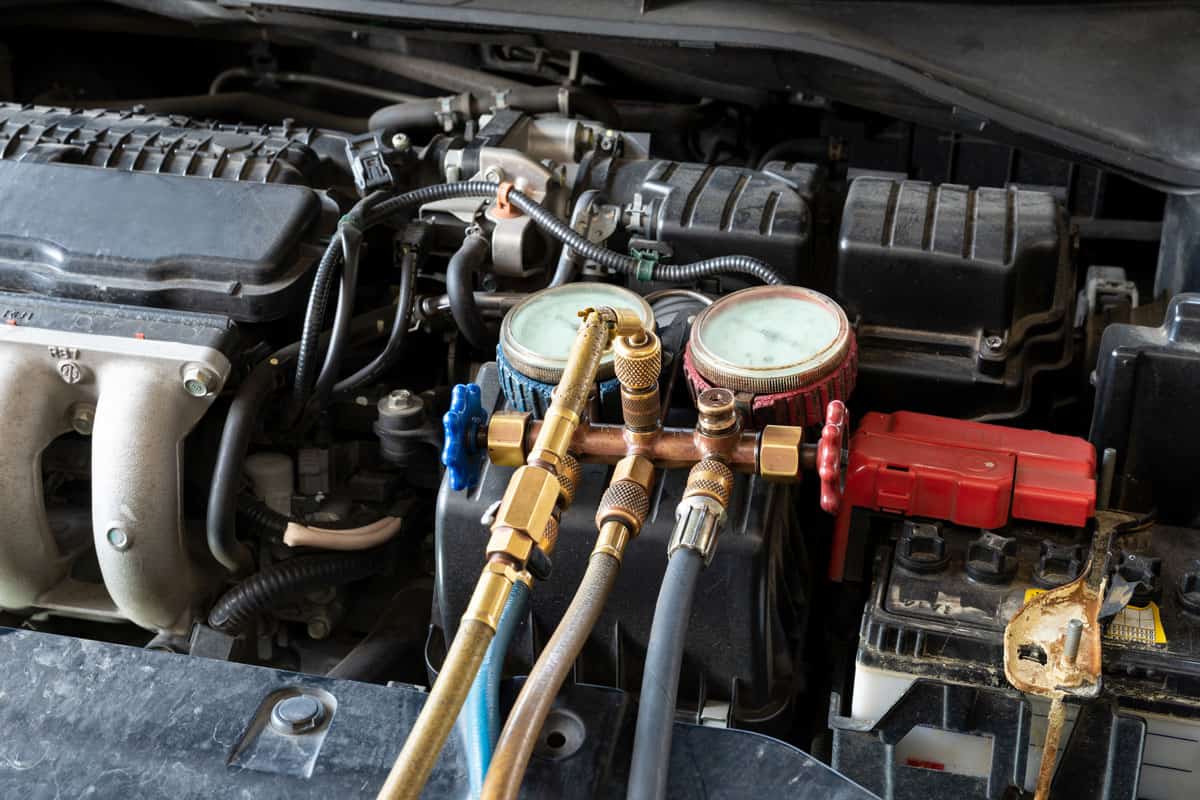
The most common symptoms of a vacuum leak are the following:
- Hissing sound
- High RPM
- Rough idling or low idling
- Hard start or not starting at all
- Car bogging down coming from a dead stop
How Does A Car's Air Intake System Work?
A car's air intake system serves to draw in air that contains oxygen and then pass it on to the engine for combustion. The air intake system consists of a throttle valve, an air filter, an air cleaner, and an intake manifold.
The throttle valve controls the flow of air into the engine. The air filter cleans the air as it passes through the air cleaner.
The air filter removes dirt and moisture from the air. The intake manifold delivers the cleaned and filtered air to the engine.
What Is A MAF (Mass Air Flow) Sensor?
A mass air flow sensor (MAF) measures the amount of air that enters an internal combustion engine. It gives feedback information to the engine’s controller, which can use it to modify the air/fuel mixture that goes to the cylinders.
The MAF sensor also provides a direct measurement of the mass of air and fuel that enters the engine. The MAF sensor works by measuring the air mass entering the engine by registering the change in pressure between the air inlet and outlet of the engine.
Check out this mass air flow sensor on Amazon
In Closing

A hissing noise coming from your car is an indicator that there's a vacuum leak somewhere in your vehicle. A vacuum leak is a problem that is very common in all cars, but more prevalent in older models where the vacuum lines and gaskets have been worn out or are damaged.
The symptoms of a vacuum leak are pretty obvious. Pinpointing the source of the leak can be difficult, but with a little bit of knowledge and patience, it's definitely possible.
You might also like these articles:
Scraping Noise From Wheel While Driving – What Does It Mean?
Loud Humming Noise When Driving – What Could Be Wrong?
Rubbing Noise When Turning At Slow Speeds – What Could It Mean?




